UFO 50
Stepping back a bit, I spent a substantial amount of time this fall on UFO 50, a collection of fifty retro-styled games written by a team of established indie auteurs over a span of years. There’s a Tolkien-like conceit to it, a pretense that the authors didn’t write the games, but discovered them — they were all supposedly created by a fictional company called UFOSoft, and each individual game has credits listing the individual fictional developers who worked on it. The game’s intro screen, which looks like an old crack loader, shows a series of photos of the dev team finding the fictional LX 8-bit console and its cartridges in an abandoned storage space. (The LX, by the way, has a built-in screen, handily explaining why games supposedly written in the 1980s run in 16:9.)
Although the games are retro-styled, their design sensibility, their mechanics and UX, are decidedly modern. Although many of them are clearly based on well-known games of the period, they always put some unique twist on them. And several of them draw from genres that hadn’t been invented yet when they were supposedly written, like idle games or tower defense. I’ve seen it asserted that it’s not actually appealing to nostalgia for 1980s console games, but rather nostalgia for the 2010s indie scene. And there’s something to that, not just in the content of the individual games, but in how they’re presented: as a smorgasbord. Those of us who were children in the 1980s remember games of the period as unitary things that you played monogamously until you had sucked all the entertainment value from them, because you probably weren’t going to get another until Christmas. Here, instead, you have a variety of games that you dip into as the mood strikes you, with no great commitment to finish all of them. So the overall experience resembles a games site like Newgrounds or Armor Games, or alternately, with its added framing UI, the various compilations that authors of Flash games have put on Steam since the death of Flash in the browser. It also resembles my Steam library, except that it’s of a manageable size, there’s a possibility that I’ll finish it all someday, and all of the games are highly distinct from one other, even when they’re a direct sequel to another game in the collection.
There’s some hint of a shared universe in some of the games, with recurring characters and reused assets and suggestively similar situations. Some of the links are pretty subtle, such that I wouldn’t have noticed them myself. It’s fun to overextend this and imagine that all of the games are linked, despite radically different genres: that whimsical kiddie fantasies like Magic Garden and Elfazar’s Hat exist in the same timeline as Fist Hell‘s zombie apocalypse and Avianos‘s post-human-extinction Earth. Apparently there’s an underlying mystery as well, a trail of clues that you can follow from game to game to unlock… something. I haven’t sought spoilers on this, since I found the entry point on my own and kind of want to follow it as far as I can independently. But solving the very first clue directs you to look for something in Mini & Max, a sort of adventure-platformer hybrid about exploring a closet while shrunken down to miniscule size, and this is one of the few games I haven’t made much headway in yet. It just has a level of complexity, of state you have to manage in you brain, that exceeds the threshold of what I can easily muster when I’m in smorgasbord mode.
But everyone’s going to find a different subset of the games grabs them. Here follows a list of the games that I’ve given the bulk of my attention to. The emoji indicate my progress. If you beat a game — whatever that means for that game — it awards you a golden trophy, and reveals an extra challenge that you can do, usually either 100% completion or some hidden secret goal. Beating this goal awards you cherries. Most of the games on this short list are ones that I’ve played enough to get cherries on.
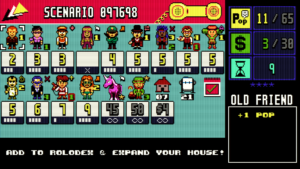

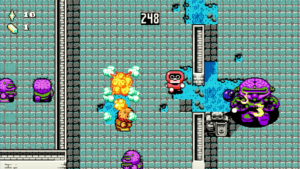

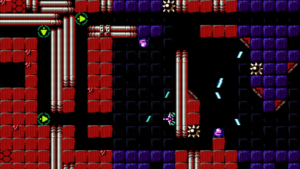

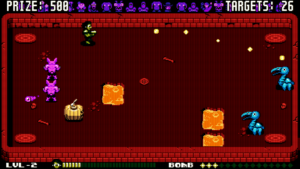

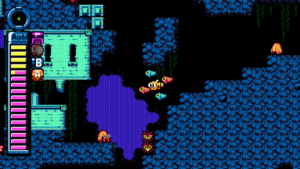

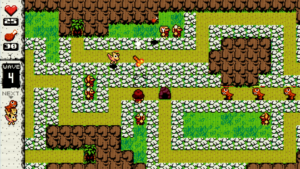 Rock On! Island: The only game on this short list that I haven’t beaten, this is a tower defense about cavemen fighting dinosaurs and other prehistoric animals. I just enjoy tower defenses in general, and this is a pretty difficult one, largely based around balancing your resources defending multiple pathways. Also, the player avatar can move about and attack in battle, and can be upgraded to a much more powerful attack than any of the statically-placed defenders, so a big part of the strategy is about deciding when it’s worth it to spend resources on yourself and when to spend them on more defenders. I’m pretty sure that part of why I haven’t finished it yet is that there are elements that I haven’t figured out, too — see again the implied existence of manuals that you don’t have.
Rock On! Island: The only game on this short list that I haven’t beaten, this is a tower defense about cavemen fighting dinosaurs and other prehistoric animals. I just enjoy tower defenses in general, and this is a pretty difficult one, largely based around balancing your resources defending multiple pathways. Also, the player avatar can move about and attack in battle, and can be upgraded to a much more powerful attack than any of the statically-placed defenders, so a big part of the strategy is about deciding when it’s worth it to spend resources on yourself and when to spend them on more defenders. I’m pretty sure that part of why I haven’t finished it yet is that there are elements that I haven’t figured out, too — see again the implied existence of manuals that you don’t have.
 Comments(0)
Comments(0)